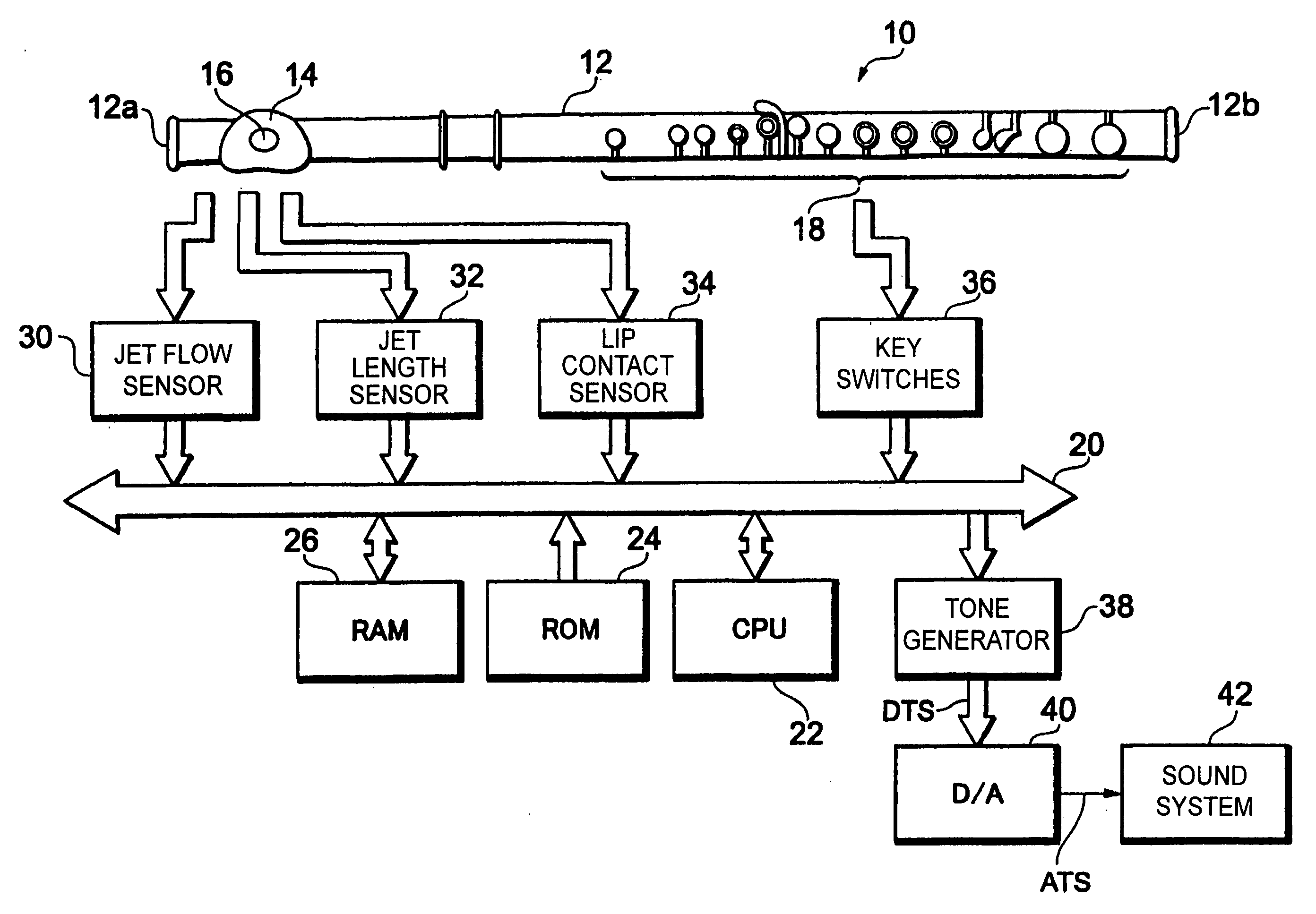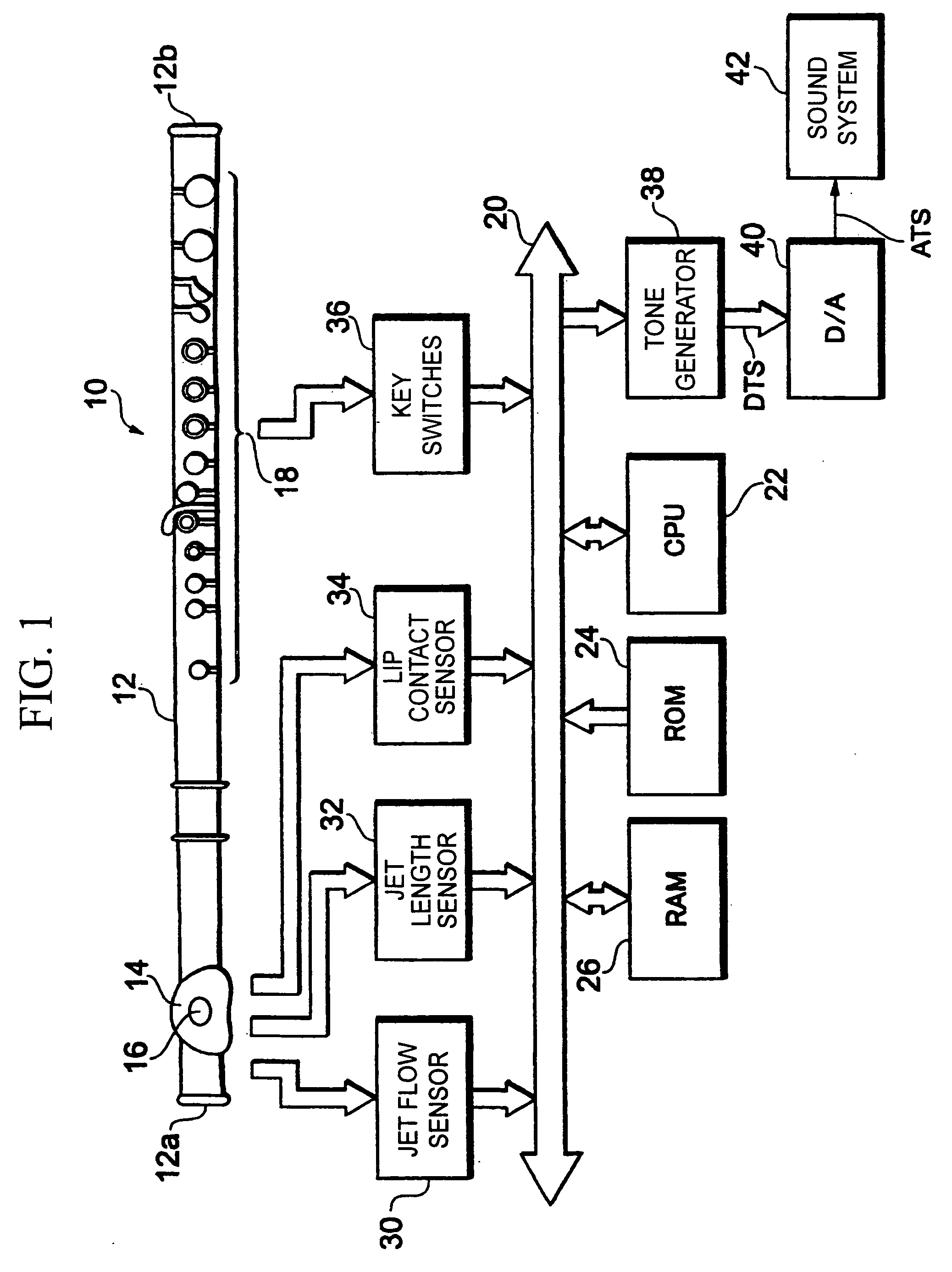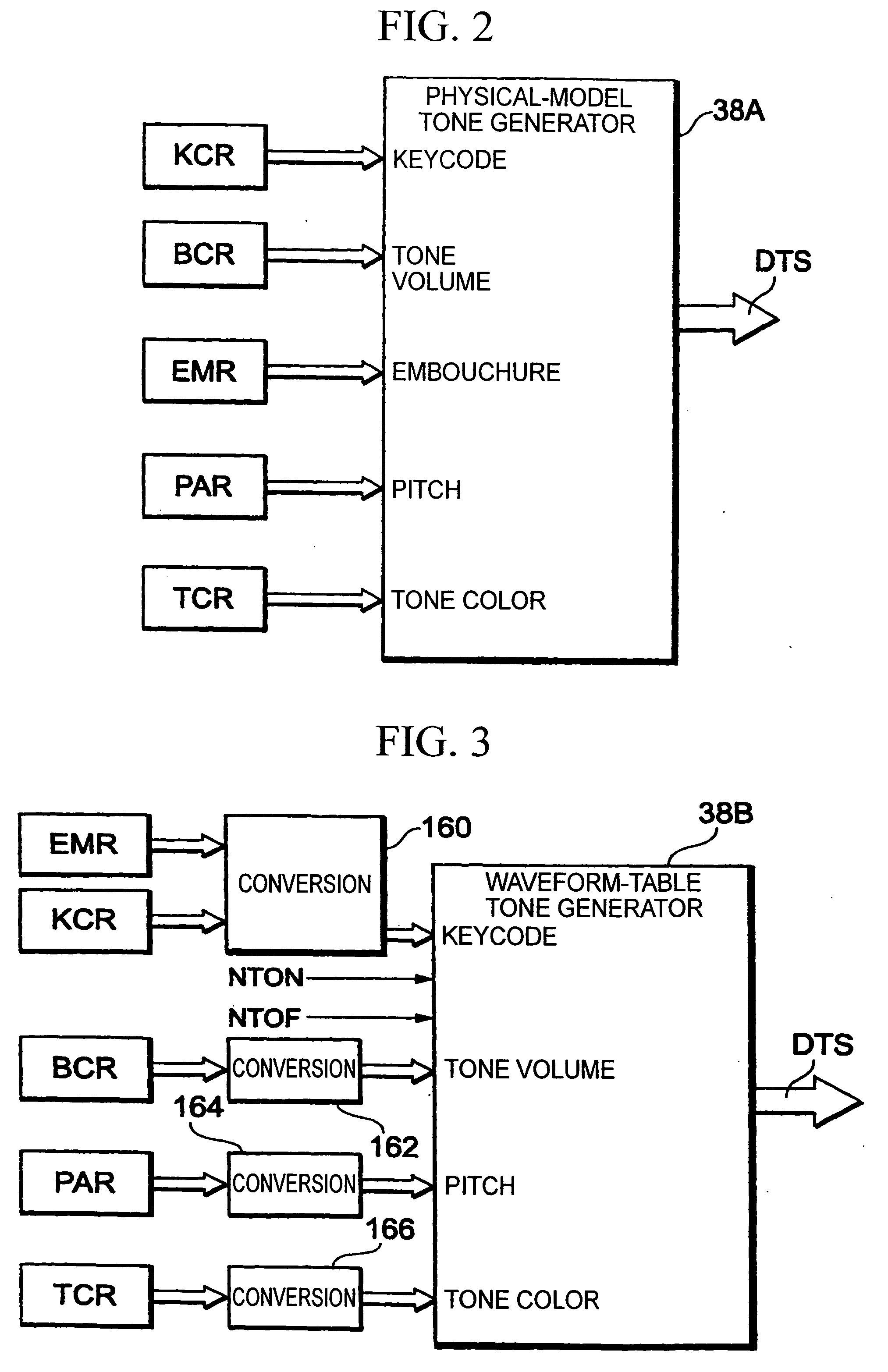Tone control device and program for electronic wind instrument
a technology of electronic wind instruments and control devices, which is applied in the direction of measurement devices, speed/acceleration/shock measurement, instruments, etc., can solve the problems of difficult to realize octave-changeover-blowing techniques, difficult to calculate an actual audio frequency in advance, and achieve the effect of increasing the controllable rang
- Summary
- Abstract
- Description
- Claims
- Application Information
AI Technical Summary
Benefits of technology
Problems solved by technology
Method used
Image
Examples
Embodiment Construction
[0083] This invention will be described in further detail by way of examples with reference to the accompanying drawings.
[0084]FIG. 1 is a block diagram showing a circuitry configuration of an electronic wind instrument, which performs tone control using a micro-computer, in accordance with a preferred embodiment of the present invention.
[0085] In FIG. 1, a wind instrument controller 10 whose shape resembles the typical shape of a flute has a thin hollow tube 12 that is elongated from a closed end 12a to an open end 12b, a lip plate 14 having a blow hole 16, which interconnects with a cavity of the tube 12, and a plurality of tone keys 18 for designating tone pitches. The wind instrument controller 10 is not designed to independently produce sound as of a flute; hence, the tube 12 can be appropriately changed in dimensions in consideration of users' easy-to-handle requirements. Incidentally, the closed end 12a can be changed to an open end.
[0086] The lip plate 14 is equipped with...
PUM
 Login to View More
Login to View More Abstract
Description
Claims
Application Information
 Login to View More
Login to View More - R&D
- Intellectual Property
- Life Sciences
- Materials
- Tech Scout
- Unparalleled Data Quality
- Higher Quality Content
- 60% Fewer Hallucinations
Browse by: Latest US Patents, China's latest patents, Technical Efficacy Thesaurus, Application Domain, Technology Topic, Popular Technical Reports.
© 2025 PatSnap. All rights reserved.Legal|Privacy policy|Modern Slavery Act Transparency Statement|Sitemap|About US| Contact US: help@patsnap.com



